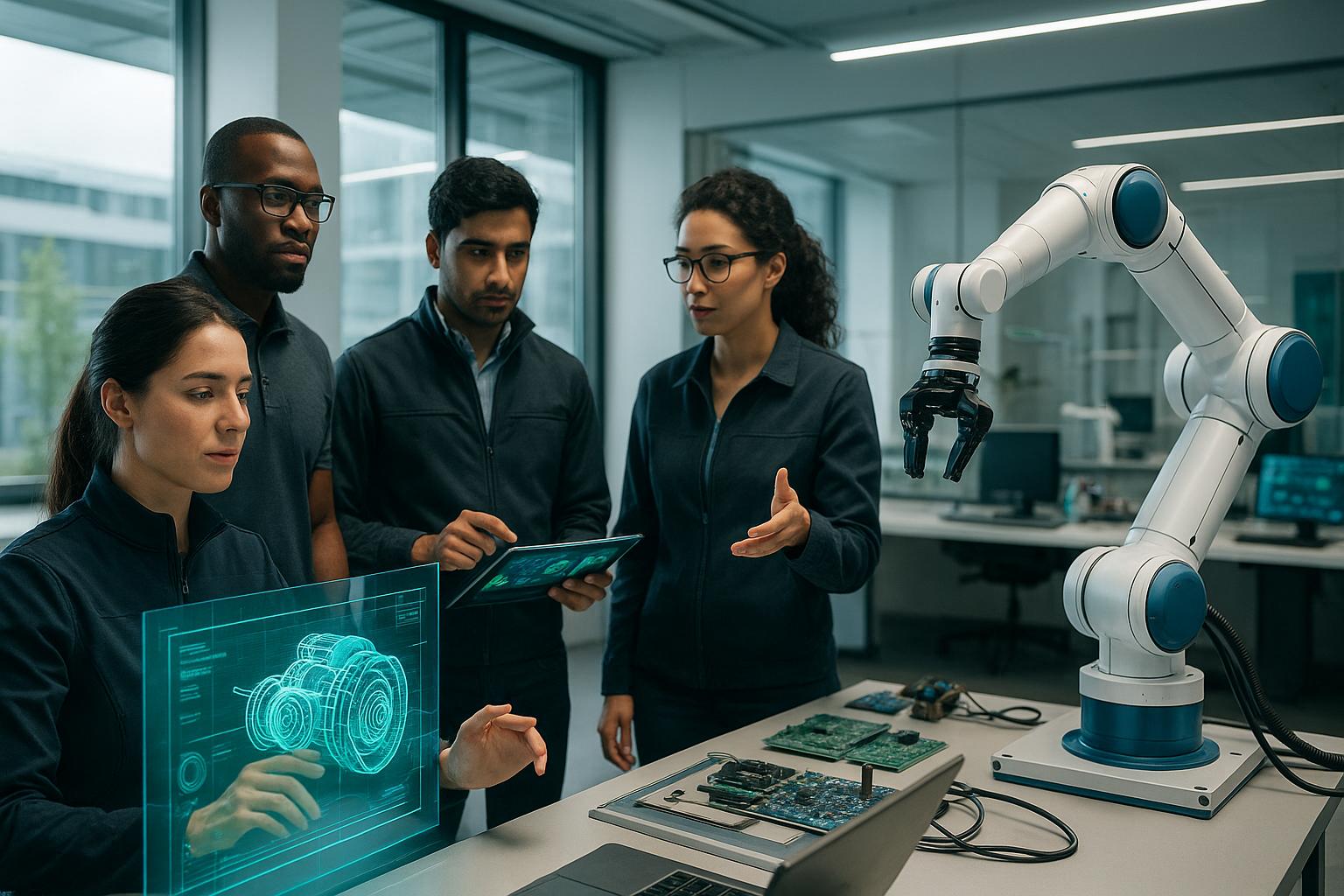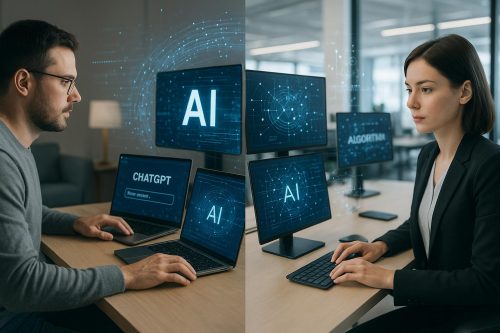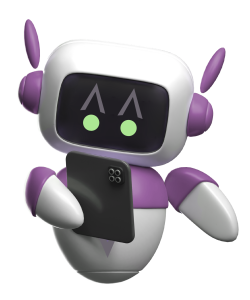By 2030, future engineering jobs will transform due to advancements in AI, robotics, and digital tools. Here’s a quick summary of what to expect:
- AI Impact: AI and automation will create 97 million new jobs globally while eliminating 85 million. Engineers will need to adapt to AI-driven workflows and interdisciplinary collaboration.
- Emerging Roles: Key future roles include:
- AI and Machine Learning Engineers: Expected 21% job growth with average salaries of $133,651/year in the U.S.
- Digital Twin Engineers: Driving efficiency with virtual replicas; the market will grow to $259.32 billion by 2032.
- Generative Design Specialists: Using AI to optimize product designs, reducing waste and improving performance.
- Robotics Engineers: Expanding into manufacturing, healthcare, and logistics; the robotics market could reach $260 billion by 2030.
- Skills Needed:
- Technical: Programming (Python, R), AI frameworks (TensorFlow), cloud computing, and cybersecurity.
- Soft: Communication, leadership, adaptability, and problem-solving.
- Training Options: Programs like Carnegie Mellon’s AI Engineering Certificate and certifications from NVIDIA and Autodesk can help engineers upskill.
Key takeaway: Engineers must blend technical expertise with teamwork and creativity to thrive in a rapidly evolving job market.
For detailed insights on each role, required skills, and future trends, keep reading.
How to FUTURE PROOF your ENGINEERING CAREER in 2025 (WEF Future of Jobs Report) and SKILLS you need!
Top Future Engineering Jobs and Their Impact
The engineering world is constantly evolving, with new roles emerging to meet the demands of technological progress. These positions are more than just new job titles – they’re reshaping industries and creating exciting opportunities for engineers ready to embrace change.
AI and Machine Learning Engineers
AI and machine learning engineers are becoming central to how businesses transform and thrive. By 2030, AI could add an estimated $15.7 trillion to the global economy, making these professionals indispensable for companies looking to tap into this potential.
These engineers are tasked with crafting AI strategies tailored to an organization’s needs. They identify specific challenges that AI can address, build the infrastructure for AI development, and integrate these systems into business operations. This role demands not only technical expertise but also strong leadership and communication skills, especially as 86% of businesses anticipate AI will significantly impact their operations by 2030.
The demand for AI software engineers is projected to grow by 21% over the next decade, according to the Bureau of Labor Statistics. As of January 2025, AI engineers in the United States earned an average salary of $133,651 annually, while Computer and Information Research Scientists reported a median salary of $145,080, with 26% job growth expected between 2023 and 2033.
"As we enter 2025, the landscape of work continues to evolve at a rapid pace. Transformational breakthroughs, particularly in Gen AI, are reshaping industries and tasks across all sectors."
– Saadia Zahidi, MD at the WEF
AI’s real-world applications highlight its transformative potential. For example, in cancer treatment planning, AI tools like InnerEye have reduced preparation times for head, neck, and prostate cancer treatments by up to 90%, expediting access to critical radiotherapy.
To excel in this field, engineers need proficiency in programming languages like Python, R, Java, and C++, as well as expertise in machine learning algorithms, big data tools, and frameworks like TensorFlow and PyTorch. Strong strategic thinking and communication skills are equally essential, as AI engineers often collaborate across teams to deliver impactful solutions.
In parallel, digital twin engineers are using virtual models to revolutionize industry processes.
Digital Twin Engineers
Digital twin engineers focus on creating virtual replicas of physical systems, enabling better decision-making and operational efficiency. This field is rapidly expanding, with the digital twin market projected to reach $259.32 billion by 2032, growing at an annual rate of 39.8%.
These engineers work across a variety of industries, from manufacturing and healthcare to urban planning and agriculture. By using virtual simulations, they improve the design, operation, and maintenance of real-world assets. Companies adopting digital twins have reported productivity gains of 30% to 60% and reductions in material waste by 20%.
Several examples show how digital twins are making a difference. At Boston Children’s Hospital, digital twin technology helps surgeons practice heart procedures and anticipate potential issues in a virtual setting. Researchers at Texas A&M University use drones, remote sensing, AI, and big data to create virtual models that enhance agricultural methods. In Lisbon, Portugal, Bentley Systems’ flood simulation software is used to plan tunnels that could prevent 20 major floods over 100 years, saving millions of euros. Amsterdam employs its Local Inclusive Future Energy (LIFE) system to stabilize its power grid and store surplus energy from solar panels on the Amsterdam ArenA.
"The ultimate vision for the digital twin is to create, test and build our equipment in a virtual environment. Only when we get it to where it performs to our requirements do we physically manufacture it. We then want that physical build to tie back to its digital twin through sensors so that the digital twin contains all the information that we could have by inspecting the physical build."
– John Vickers, NASA’s leading manufacturing expert and manager of the NASA National Center for Advanced Manufacturing
Digital twins also support sustainability by improving resource use, cutting carbon emissions, and enhancing energy efficiency. Companies using this technology report an average 15% improvement in operational efficiency and significantly shorter times to market.
While digital twins focus on virtual modeling, generative design specialists are redefining how products are created with AI-driven innovation.
Generative Design Specialists
Generative design specialists merge traditional design principles with AI-driven creativity. By leveraging machine learning algorithms, they explore countless design possibilities at once, transforming the product development process.
This role requires expertise in materials science, manufacturing processes, and design constraints. Specialists input parameters like weight limits, material properties, and production methods into AI systems, which then generate optimized designs that might never occur to human designers.
The impact of generative design is particularly evident in industries where weight, strength, and material efficiency are critical. In aerospace, it’s used to create lighter yet stronger components. In the automotive sector, it helps design vehicle parts that reduce weight without sacrificing safety.
Generative design also supports sustainability by minimizing material waste during the design phase and improving product performance. Additionally, it allows for rapid iteration and virtual testing of concepts before physical prototypes are produced.
Robotics Engineers in 2030
Robotics engineers are advancing beyond simple automated machines to develop intelligent systems capable of learning, adapting, and collaborating with humans. The global robotics market is set to grow from about $25 billion in 2021 to between $160 billion and $260 billion by 2030.
The scope of robotics engineering is expanding rapidly. By 2030, Level 3 robots are expected to navigate autonomously in predefined environments like warehouses, pausing or signaling when human assistance is needed. Meanwhile, Level 4 robots will operate entirely on their own, handling unexpected situations without human intervention.
Professional service robots are a key driver of this growth, with their market share potentially exceeding $170 billion by 2030. Industrial and logistics robot sales are also projected to reach around $80 billion.
"The critical difference between today’s robotics and automation versus those in years past is the connected technologies and capabilities…But the way we can now monitor machines in a manufacturing environment, transferring vast amounts of data – whenever we want and to whoever we want, along with the information derived from the data – that’s what’s innovative."
– Manish Kumar, Professor and Graduate Program Director at the University of Cincinnati
Real-world examples highlight this evolution. Amazon uses autonomous robots in its fulfillment centers to speed up inventory movement and improve order accuracy. In electronics manufacturing, robots perform precision soldering, reducing repetitive tasks while enabling workers to monitor robotic systems and analyze production data.
Rather than replacing workers, robotics is fostering collaboration. For instance, regional food processing companies have launched training programs to help employees transition into roles operating automated packaging systems. These programs teach workers how to program and maintain robots, which streamline sorting and packaging while minimizing errors.
Automation is expected to account for 25% of industrial capital spending by 2027. This increased investment is driving demand for robotics engineers who can design, implement, and maintain advanced systems that ensure seamless collaboration between humans and robots. The International Federation of Robotics reported that by the end of 2019, 2.7 million robots were in operation globally – mostly in manufacturing – and this number continues to rise as robotics expands into healthcare, service industries, and other areas requiring adaptive intelligence and human interaction.
Skills Required for Future Engineering Jobs
The engineering world is evolving quickly, with 70% of job-related skills expected to change by 2030, according to LinkedIn‘s 2025 Work Change Report. To succeed in this AI-driven era, engineers need to blend technical expertise with human-focused insights. These shifting skill requirements are shaping the future of engineering roles.
Technical Skills for Future Engineering Jobs
In the future, technical proficiency will be a cornerstone for engineers. Here’s what they’ll need to master:
- Programming and AI Knowledge: Familiarity with programming languages like Python, R, and C++ is essential. Engineers also need to understand machine learning frameworks such as TensorFlow and PyTorch. In fact, Coursera reports a 177% rise in AI literacy adoption since 2023.
- Cloud Computing Expertise: With distributed systems and remote collaboration becoming the norm, knowledge of platforms like AWS, Microsoft Azure, and Google Cloud is critical for deploying scalable solutions.
- Data Analytics Skills: Engineers must be able to interpret complex datasets and extract actionable insights, a skill that’s becoming increasingly valuable.
- Cybersecurity Awareness: Understanding how to assess threats and implement secure coding practices is vital for building resilient systems.
- Building Information Modeling (BIM): These skills are crucial for roles involving digital twins and smart infrastructure projects. BIM tools help engineers create detailed virtual models of physical systems throughout their lifecycle.
Additionally, AI prompt engineering is reshaping how engineers interact with technology. Instead of manually coding every detail, they’re learning to work with AI systems to generate, refine, and troubleshoot solutions.
The Importance of Soft Skills in Future Engineering Jobs
While technical skills are essential, soft skills are equally critical for future engineers. By 2030, two-thirds of all jobs will depend on soft skills, and roles requiring these abilities are growing 2.5 times faster than others.
- Communication Skills: Engineers must explain complex technical ideas to diverse audiences, from executives to cross-functional teams. This is especially important in robotics-related roles, where clear communication is key to human–robot collaboration.
- Leadership Abilities: With 53% of employers expressing concern over a shortage of engineering managers, leadership skills are in high demand. Engineers who can guide teams, make strategic decisions, and foster innovation will stand out.
- Adaptability and Cognitive Flexibility: The ability to embrace new technologies and navigate uncertainty is invaluable. According to the World Economic Forum, 65% of children entering school today will work in jobs that don’t yet exist. Lifelong learning is non-negotiable.
- Emotional Intelligence: As teams become more diverse and remote, understanding team dynamics, managing conflicts, and building trust are essential for successful collaboration.
- Critical and Creative Thinking: Engineers must approach problems from multiple perspectives. In generative design roles, for example, balancing AI-generated solutions with human intuition leads to better outcomes.
- Problem-Solving Skills: These remain a cornerstone of engineering, though the challenges now include technical complexity, ethical considerations, sustainability, and user experience.
Combining technical expertise with these soft skills equips engineers to thrive in interdisciplinary roles.
Training and Certification Options
Engineers have access to various programs to build the skills needed for future roles:
- Carnegie Mellon University offers an online Graduate Certificate in AI Engineering – Digital Twins & Analytics. This nine-month program covers topics like "Principles of Digital Twins" and "AI for Predictive Analytics".
- Fraunhofer IPK provides a modular online program, "Mastering Digital Twins", which spans all lifecycle phases, from ideation to end-of-life management. The self-paced course costs €490, while the full package with expert seminars is priced at €1,080. The program emphasizes real-world applications with practical examples.
- TECH United States features a Postgraduate Certificate in Digital Twins starting at $267 monthly, making it accessible to working professionals. This program focuses on both strategic and technical aspects of digital twin implementation.
Industry-specific certifications, such as those from NVIDIA for AI development and Autodesk for generative design, offer targeted skills. These certifications often include hands-on projects, allowing engineers to showcase their abilities.
Additionally, many companies are introducing internal development programs that combine formal training with mentorship and real-world projects.
Success in this evolving landscape requires blending formal education with continuous self-learning. Staying up-to-date through industry journals, professional associations, internships, and side projects ensures engineers remain competitive in the ever-changing job market.
sbb-itb-eb32bf3
How HR Can Support Future Engineering Teams
With the rapid evolution of engineering roles influenced by AI, robotics, and digital advancements, HR strategies need to keep pace. The challenges are significant: 30% of engineering jobs in the U.S. remain unfilled, and 80% of HR professionals identify labor shortages as a major hurdle. The growing demand for expertise in AI-driven engineering, robotics, software design, and renewable energy solutions highlights the need for HR to adapt. To meet these challenges, HR must develop talent management strategies that align with the shifting demands of engineering roles. Here’s how HR can rise to the occasion.
Using AI to Identify Skills Gaps
AI isn’t just transforming engineering roles – it’s also reshaping how HR identifies and addresses skills gaps. AI-powered tools can analyze current employee capabilities and compare them to the requirements of emerging roles. For example, these tools can evaluate the technical skills of employees aspiring to become digital twin engineers or generative design specialists, recommending targeted training in programming languages, hardware expertise, or safety protocols.
Some companies are already using AI platforms to design personalized development plans for engineers transitioning into robotics-focused roles by 2030. Predictive analytics further enhance this process, allowing HR to anticipate future skill demands and proactively plan both training initiatives and hiring strategies. By integrating AI assessments into broader HR systems, organizations can gain a complete picture of their workforce’s capabilities and readiness for future challenges.
Mentorship and Career Growth Programs
Structured mentorship and career development programs are crucial for nurturing engineering talent. Programs like Buffer’s Engineering Mentorship Program, Google’s "Build Your Future", and Cruise Automation’s algorithm-driven mentor-mentee pairing system highlight how these initiatives can drive innovation and collaboration.
Effective mentorship programs for future engineering jobs go beyond generic pairings. They focus on aligning mentors and mentees based on personality, communication styles, goals, and specific challenges. At the same time, career growth programs should outline clear paths for advancement, introducing new job titles and career tracks tailored to roles like digital twin engineers or generative design specialists. HR teams must work closely with engineering leadership to design these progression paths and communicate them effectively, ensuring employees see a tangible future within the organization.
Building Diverse Engineering Teams
Diversity is not just a moral imperative – it’s a business necessity for engineering teams of the future. Mentorship programs can play a key role in promoting diversity, improving retention, and boosting employee engagement. Inclusive hiring practices should start with removing bias from job descriptions and focusing on essential skills rather than irrelevant qualifications.
Employee resource groups (ERGs) can also contribute to diversity efforts by creating spaces where underrepresented engineers can network and grow professionally. For instance, ERGs might focus on women in robotics or minorities in AI-related roles, providing support and opportunities to share experiences.
Flexible work arrangements are another critical factor in attracting diverse talent. A recent survey found that 76% of respondents reported their employers had adopted hybrid work models. Remote work options are increasingly seen as non-negotiable by employees. To ensure fairness, hiring managers should undergo bias training, which includes recognizing unconscious bias in technical interviews and adopting objective assessment methods.
Retention is equally important. Offering robust learning opportunities, such as training in emerging technologies, mentoring, and clear career advancement plans, can make a significant difference. Research shows that 67% of employees are more likely to stay with a company that invests in their growth through upskilling and career development. Additionally, fostering a corporate culture of transparency, inclusivity, and open communication is essential. Engaged employees can lead to a 17% boost in productivity and a 21% increase in profitability.
"More than ever, U.S. workers are seeking benefits that match their unique lifestyle and needs. Small and midsize engineering firms that offer personalized benefits packages have a competitive edge when it comes to hiring and retaining the exact talent they need."
– Megan Holstein, Head of Priority Business at The Hartford
Diversity isn’t a one-and-done effort – it requires constant evaluation and improvement. HR teams should regularly track diversity metrics across all levels of engineering roles, from entry-level positions to senior leadership. Surveys and feedback sessions are invaluable in identifying areas for improvement, ensuring that diversity initiatives translate into meaningful, inclusive experiences for employees. By committing to these strategies, HR can help build engineering teams that are as dynamic and innovative as the challenges they’ll face.
Conclusion: Getting Ready for Future Engineering Jobs
The engineering world of 2030 is fast approaching, bringing with it sweeping changes in how professionals think, work, and collaborate. According to the World Economic Forum, 170 million new jobs will emerge globally by 2030, while 92 million will disappear – resulting in a net gain of 78 million positions. For future engineering jobs, this shift represents immense opportunities, but only for those who start preparing now.
By 2030, 39% of current skill sets will either evolve drastically or become obsolete. In engineering, nearly one-third of roles could remain unfilled due to a lack of qualified professionals. Yet, despite this demand, only half of today’s workforce feels adequately trained, and 60% of workers will require retraining by 2027. These numbers highlight an urgent need for both personal and organizational transformation.
To thrive in this evolving landscape, engineers must embrace a mindset of continuous learning. Gone are the days when mastering a single specialty could sustain an entire career. As Kristina Swallow, President of the American Society of Civil Engineers, puts it:
"Throughout my career, I have seen that what I need to know now has changed … with time, technology, and generally society, but it has also changed as my role has changed".
This shift demands that engineers build expertise in fields like AI in engineering, robotics, generative design, and digital twin technologies, while also honing softer skills like creativity, collaboration, and problem-solving.
Organizations, too, must adapt. While only 5% of companies feel prepared for the workforce of the future, 82% plan to invest in learning and development initiatives. Breaking down traditional silos, fostering interdisciplinary teamwork, and creating clear career pathways will be critical for success. Professor Tim Ibell from the University of Cambridge emphasizes this point:
"Engineers need to be good at STEM, of course, but of far greater importance is an engineer’s ability to be creative, deep thinking and able to work with others".
Upskilling existing employees often proves more effective than hiring externally, and many companies are committing resources to internal development programs. McKinsey’s research shows that up to 12 million workers in Europe and the United States will need to switch jobs. Meanwhile, automation could take over as much as 70% of current tasks, freeing up engineers to focus on higher-value work that demands creativity, critical thinking, and emotional intelligence.
To succeed in future engineering jobs, engineers and organizations must act now. This means focusing on three key areas: mastering emerging technologies, strengthening cross-functional collaboration, and staying adaptable in the face of change. Brittany Harris, a graduate engineer, offers this advice:
"Challenge everything! If you think there is a better way of doing something, then put it out there because the likelihood is you are ahead of the industry".
Ultimately, the responsibility for preparing lies with both individuals and organizations. Engineers who pair technical expertise with a human-centered approach will lead the way, while forward-thinking companies that prioritize learning and innovation will set the standard. The future of engineering belongs to those ready to adapt and grow in this rapidly changing world.
FAQs
What does a digital twin engineer do, and why is their role important across industries?
A digital twin engineer creates and oversees virtual replicas of physical assets, systems, or processes – commonly referred to as digital twins. Using tools like 3D modeling software and real-time data analytics, they simulate how these assets function and change over time. This approach helps businesses fine-tune designs, track performance, and anticipate maintenance needs before problems occur.
These engineers play a key role in industries such as manufacturing, aerospace, and healthcare. In manufacturing, for instance, they help improve production by spotting inefficiencies and minimizing downtime. In aerospace, they allow teams to virtually test and refine intricate systems, reducing costs and enhancing safety. By connecting the physical and digital worlds, digital twin engineers drive progress and efficiency in a variety of fields.
How can engineers prepare for the impact of AI and automation on jobs by 2030?
To thrive in a workforce increasingly shaped by AI and automation, engineers need to sharpen both their technical and interpersonal skills. Start by diving into cutting-edge technologies like machine learning, data analytics, and cloud computing – these are quickly becoming must-haves for many engineering roles. Online platforms offering courses, certifications, and hands-on projects are excellent ways to stay current and competitive in this fast-paced environment.
But don’t overlook the power of soft skills. Abilities like creativity, critical thinking, and emotional intelligence are areas where AI still falls short. These qualities will be vital for roles that demand innovation, teamwork, and problem-solving. Another way to stand out? Explore opportunities that blend disciplines – think pairing engineering expertise with knowledge of AI ethics or sustainability. This kind of versatility can make you an asset in a rapidly changing job market.
The key is to keep learning and evolving. Staying adaptable will help you carve out a successful path in the engineering landscape of 2030.
What technical and soft skills will be essential for future engineering jobs, and how can you develop them?
The future of engineering will require a mix of technical know-how and interpersonal skills to succeed in an ever-changing landscape. On the technical side, expertise in areas like AI and machine learning, robotics and automation, generative design tools, and digital twin engineering will be essential. Engineers will also need a strong grasp of advanced programming languages, such as Python and Java, along with skills in cloud computing and data analysis.
But it’s not just about the tech. Soft skills like clear communication, teamwork, flexibility, and emotional intelligence will be just as critical. These abilities will help engineers navigate the increasingly collaborative and interdisciplinary nature of their work.
To build these skills, you can explore formal engineering education or related fields, take advantage of online courses and certifications, and gain practical experience through internships or personal projects. Staying informed about industry shifts through workshops, webinars, and professional conferences is another great way to stay ahead in this competitive field.





